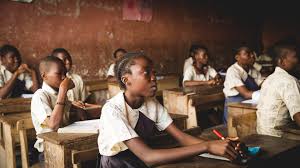
Education is a powerful tool for empowering individuals and transforming communities, yet many girls around the world still face barriers to completing their education. Recent education reforms are focusing on addressing these barriers and reducing dropout rates among girls. These efforts are vital for ensuring that every girl has the opportunity to achieve her full potential. Here’s a closer look at the new reforms and their impact.
Why Focus on Reducing Dropout Rates Among Girls?
Girls’ education is crucial for several reasons:
- Empowerment: Education empowers girls with knowledge and skills, leading to greater economic opportunities and independence.
- Health and Well-being: Educated girls are more likely to make informed decisions about their health and well-being.
- Community Impact: Educated women contribute to the economic and social development of their communities.
Despite these benefits, many girls face obstacles that prevent them from staying in school, such as:
- Economic Challenges: Families may struggle to afford school fees or related costs.
- Cultural Barriers: In some cultures, girls may face societal pressures or norms that discourage education.
- Safety Concerns: Issues such as violence or harassment can make schools unsafe for girls.
Key Reforms to Address Dropout Rates
To tackle these challenges, several new education reforms have been introduced. These reforms aim to create a more supportive and inclusive educational environment for girls.
1. Financial Support and Scholarships
Financial support is being expanded to help families cover the costs of education. Key measures include:
- Scholarships: Providing scholarships to help cover school fees, uniforms, and other expenses.
- Subsidies: Offering subsidies or cash transfers to families to alleviate the financial burden of education.
- Free Schooling: Implementing or expanding free education programs to ensure that cost is not a barrier.
Impact:
- Increased Enrollment: Financial support makes it easier for families to send their daughters to school.
- Reduced Dropout Rates: Alleviating financial pressures helps girls stay in school longer.
2. Improving School Infrastructure
Investments are being made to improve school infrastructure, making schools safer and more accessible. This includes:
- Building Facilities: Constructing and renovating classrooms, restrooms, and other essential facilities.
- Safe Spaces: Creating safe and private spaces for girls, including changing rooms and sanitary facilities.
- Transport Solutions: Providing transportation services to ensure that girls can safely travel to and from school.
Impact:
- Enhanced Safety: Improved infrastructure helps create a safer and more welcoming environment for girls.
- Better Access: Upgraded facilities and transport options make it easier for girls to attend school regularly.
3. Community Engagement and Awareness
Community engagement is crucial for changing attitudes towards girls’ education. Efforts include:
- Awareness Campaigns: Running campaigns to promote the value of girls’ education and challenge harmful stereotypes.
- Local Partnerships: Collaborating with community leaders, NGOs, and other organizations to support education initiatives.
- Parent Involvement: Encouraging parents to actively support and prioritize their daughters’ education.
Impact:
- Cultural Change: Increased awareness and community support help shift cultural attitudes towards girls’ education.
- Increased Support: Engaged communities are more likely to support and invest in girls’ education.
4. Tailored Educational Programs
Educational programs are being tailored to meet the specific needs of girls. This includes:
- Mentoring Programs: Providing mentorship and guidance to support girls through their educational journey.
- Life Skills Training: Offering programs that teach life skills, including financial literacy and health education.
- Flexible Learning Options: Introducing flexible learning options, such as evening classes or online education, to accommodate various needs.
Impact:
- Enhanced Support: Tailored programs address the unique challenges faced by girls and provide additional support.
- Improved Retention: Flexible learning options and mentoring help keep girls engaged and motivated.
5. Addressing Safety and Violence
Efforts are being made to address safety and violence in schools, including:
- Anti-Bullying Policies: Implementing and enforcing anti-bullying policies to protect girls from harassment and violence.
- Training and Support: Providing training for teachers and staff on handling issues of violence and creating a safe school environment.
- Support Services: Offering counseling and support services for girls who experience violence or harassment.
Impact:
- Safer Schools: Addressing safety issues helps create a more secure environment where girls feel safe and supported.
- Increased Attendance: Girls are more likely to attend and stay in school if they feel safe and protected.
Looking Ahead: The Future of Girls’ Education
The recent education reforms represent significant progress in addressing the challenges faced by girls and reducing dropout rates. However, continued efforts are needed to sustain and build on these achievements. Future initiatives may include:
- Monitoring and Evaluation: Regularly assessing the effectiveness of reforms and making necessary adjustments.
- Expanding Programs: Scaling up successful programs to reach more communities and regions.
- Strengthening Partnerships: Enhancing collaboration between governments, NGOs, and local organizations.
Conclusion
The new education reforms aimed at reducing dropout rates among girls are a vital step toward achieving gender equality and ensuring that every girl has the opportunity to succeed. By addressing financial barriers, improving infrastructure, engaging communities, tailoring educational programs, and ensuring safety, these initiatives are making a meaningful difference.
As we continue to support and invest in girls’ education, we can build a brighter future where every girl has the chance to reach her full potential and contribute to a more equitable and prosperous society.





